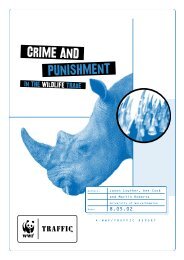In full swing: assessment of trade in orang-utans and ... - WWF UK
In full swing: assessment of trade in orang-utans and ... - WWF UK
In full swing: assessment of trade in orang-utans and ... - WWF UK
Create successful ePaper yourself
Turn your PDF publications into a flip-book with our unique Google optimized e-Paper software.
S<strong>in</strong>ce many <strong>of</strong> the buyers, <strong>and</strong> presumably most <strong>of</strong> the vendors, are aware <strong>of</strong> the protected status <strong>of</strong> gibbons <strong>and</strong> <strong>orang</strong><strong>utans</strong>,<br />
this might pose a problem when either sell<strong>in</strong>g or purchas<strong>in</strong>g these species. As with other species <strong>of</strong> protected<br />
wildlife, some vendors specifically mention that, for <strong>in</strong>stance, gibbons from Sumatra are not legally protected, whereas<br />
others po<strong>in</strong>t out legal loopholes or the <strong>in</strong>ability <strong>of</strong> the forestry department to enforce the law. Both at the Pramuka bird<br />
market (Jakarta) <strong>and</strong> the Ngasem bird market (Yogyakarta), the author received not just <strong>in</strong>formation about the<br />
availability <strong>of</strong> gibbons <strong>and</strong>, with more difficulty, <strong>orang</strong>-<strong>utans</strong>, but also about the possibilities <strong>of</strong> purchas<strong>in</strong>g the<br />
necessary legal documents. All th<strong>in</strong>gs have a price, <strong>and</strong> accord<strong>in</strong>g to the <strong>trade</strong>r <strong>in</strong> Yogyakarta, the price <strong>of</strong> a permit<br />
equals that <strong>of</strong> the animal itself or may even be somewhat higher. These permits were allegedly obta<strong>in</strong>ed from some army<br />
personnel or police <strong>of</strong>ficers.<br />
Table 4.<br />
Summary <strong>of</strong> the total number <strong>of</strong> <strong>in</strong>dividuals encountered at Javan <strong>and</strong> Bal<strong>in</strong>ese bird markets. Note that survey<br />
effort differs between the prov<strong>in</strong>ces (see Annex 1).<br />
Species West Java Central Java East Java Bali Total<br />
Hylobates moloch 2 4 1 0 7<br />
Hylobates agilis 5 5 9 0 19<br />
Hylobates albibarbis 0 0 3 0 3<br />
Hylobates muelleri 1 6 2 1 10<br />
Hylobates lar 1 0 0 0 1<br />
Hylobates klossi 0 3 0 0 3<br />
Hylobates spp. 12 4 9 0 25<br />
Symphalangus syndactylus 10 5 6 0 21<br />
Pongo pygmaeus 4 3 11 0 18<br />
Pongo abelii 0 0 0 0 0<br />
At bird markets throughout Java <strong>and</strong> Bali, Siamang was the species most frequently encountered, whereas Bornean<br />
Orang-utan is also relatively frequently <strong>of</strong>fered for sale. As a group, gibbons were encountered significantly more <strong>of</strong>ten<br />
than <strong>orang</strong>-<strong>utans</strong> or Siamangs, whereas the numbers found <strong>of</strong> the latter two do not differ significantly. There seemed to<br />
be few regional differences <strong>in</strong> the <strong>trade</strong> <strong>in</strong> gibbons, Siamangs <strong>and</strong> <strong>orang</strong>-<strong>utans</strong>, except that Bornean Orang-<strong>utans</strong> seem<br />
to be particularly abundant <strong>in</strong> East Java. Figure 2 depicts the regional differences <strong>in</strong> encounter rates <strong>of</strong> gibbons,<br />
Siamangs <strong>and</strong> <strong>orang</strong>-<strong>utans</strong>.<br />
Several species <strong>of</strong> gibbon <strong>and</strong> both species <strong>of</strong> <strong>orang</strong>-utan are considered globally threatened by IUCN – the World<br />
Conservation Union (Anon, 2004b). <strong>In</strong> this <strong>assessment</strong>, the status <strong>of</strong> the Javan Gibbons <strong>and</strong> Sumatran Orang-<strong>utans</strong> is<br />
most precarious (they have been classified as Critically Endangered), followed by the Bornean Orang-utan<br />
(Endangered), <strong>and</strong> the Kloss' Gibbon <strong>and</strong> Bornean White-bearded Gibbon (both classified as Vulnerable, see footnote<br />
under Table 2). There is no clear relation whatsoever between the species' IUCN Red List status <strong>and</strong> the number <strong>of</strong><br />
<strong>in</strong>dividuals encountered at bird markets <strong>in</strong> Java <strong>and</strong> Bali. Some threatened species are relatively frequently encountered<br />
(e.g. Bornean Orang-utan) whereas some less-threatened species, such as White-h<strong>and</strong>ed Gibbons, are rarely <strong>trade</strong>d on<br />
Java <strong>and</strong> Bali.<br />
IN FULL SWING:ASSESSMENT OF TRADE IN ORANGUTANS AND GIBBONS ON JAVA AND BALI,INDONESIA 17


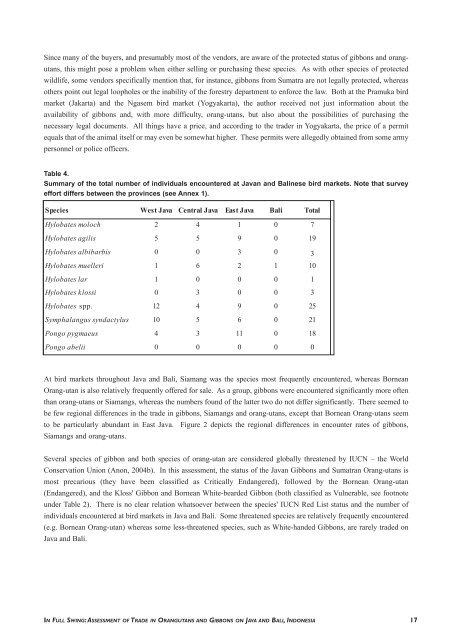
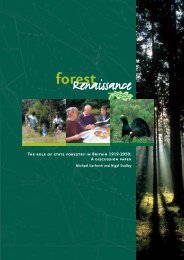
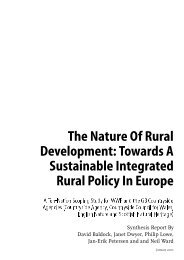
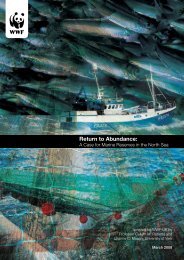

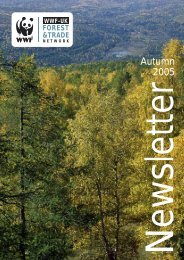

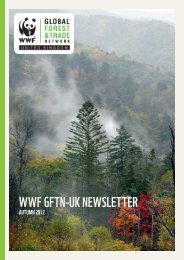
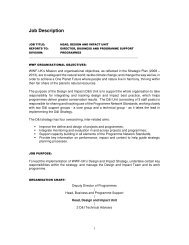
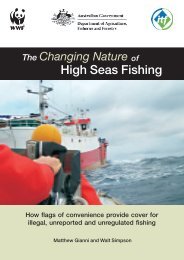
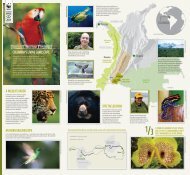
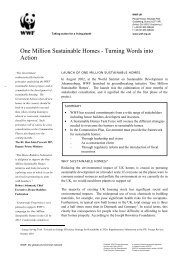
![[PDF] Causes for concern: chemicals and wildlife - WWF UK](https://img.yumpu.com/31929970/1/184x260/pdf-causes-for-concern-chemicals-and-wildlife-wwf-uk.jpg?quality=85)
